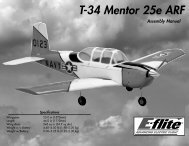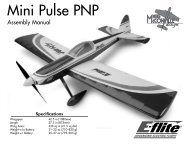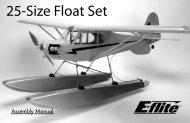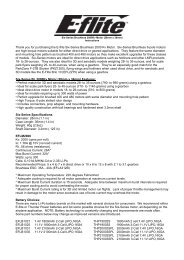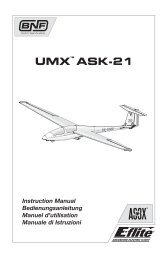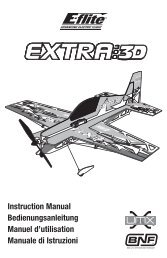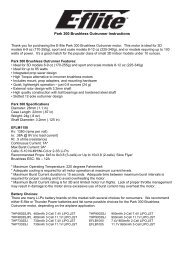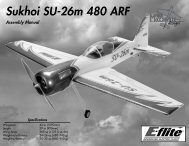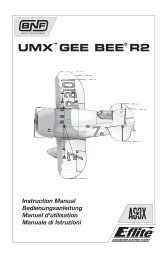Ascent 450 BL Park Glider PNP - E-flite
Ascent 450 BL Park Glider PNP - E-flite
Ascent 450 BL Park Glider PNP - E-flite
You also want an ePaper? Increase the reach of your titles
YUMPU automatically turns print PDFs into web optimized ePapers that Google loves.
Sometimes the wind will cause the thermal to bend or break,<br />
causing a warm air bubble that slowly travels downwind as it<br />
rises. Thermals can vary in strength, rising at speeds of a few<br />
hundred to over a thousand feet per minute.<br />
Thermal Form (Column)<br />
As you are flying your <strong>Ascent</strong>, watch it carefully. If you were in a<br />
full-size glider, you would be able to feel the "bump" of entering<br />
a thermal. Now you must depend on signs the glider gives as it<br />
approaches or enters a thermal.<br />
When the <strong>Ascent</strong> flies near a thermal that is rising, the wing<br />
closest to the thermal will also try to rise, causing the aircraft to<br />
"rock" slightly. The nearness of a thermal will cause the glider to<br />
"turn away" without any control input from the pilot.<br />
Executing a 270-degree turn<br />
There are several ways of entering a thermal. One is to continue<br />
the thermal-induced turn for 270 degrees. If the thermal is on<br />
your right, turn left for 270 degrees and enter at a right angle to<br />
the original flight path.<br />
Thermal Form (Bubble)<br />
E-<strong>flite</strong> <strong>Ascent</strong> <strong>PNP</strong> Assembly Manual<br />
21



